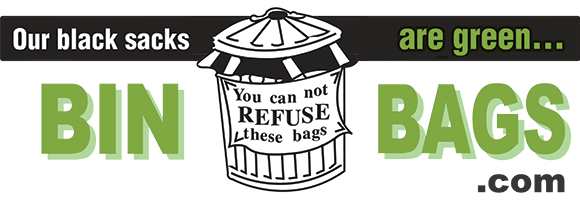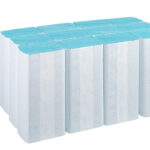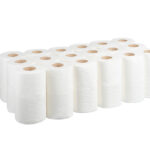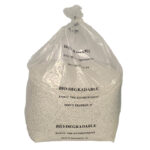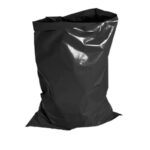Frequently Asked Questions About Bin Bags
TIP: All of our bin bags state the face width, open width and length – saving you time and effort on measuring.
TIP: If you can’t find a bag to match the exact size of your bin, you should always choose a larger sack over a smaller one to ensure it will fit your waste container. Some bags will stretch but others will tear , this is because of the nature of the material from which the bag is made, Low density polyethylene (LDPE) is a more pliable plastic than High Density Poly Ethylene(HDPE).
TIP: All of our bin bags state the face width, open width and length – saving you time and effort on measuring.
To find the correct size sack for your bins, it’s important that you understand the three measurements used to calculate the dimensions of a bin bag.
These three measurements are the face width, open width and length.
The face width is the sealed, closed width of the bottom of your bin bag. The open width is the maximum width of the bin bag when it is stretched from one side to the other. The length is simply the measurement from the top to the very bottom of the bin bag.
With these three measurements, you can work out what size bag you need for your bins.
TIP: A simple way to calculate the circumference of your bin is to find the diameter (the width from one side to the other) and multiply this by 3.14 (pi).
Bin Liners
The difference between bin bags and bin liners is that a bin bag is stronger and generally thicker than a bin liner. Bin liners are designed to keep your bins clean and hold a small amount of waste. As such, they are often used with small pedal and swing bins in guestrooms and hotel bathrooms, as keeping the bin hygienic is important to customer satisfaction and well-being.
WHAT SIZE BIN BAG DO I NEED?
To make the most of the space in your bins, it’s important that you find the correct size bag. Picking too big a bin bag will result in an unsightly overhang and needless added costs. Picking too small a bag means it may not fit the bin at all, or leave insufficient room for tying and carrying.
TIP: If you can’t find a bag to match the exact size of your bin, you should always choose a larger sack over a smaller one to ensure it will fit your waste container.
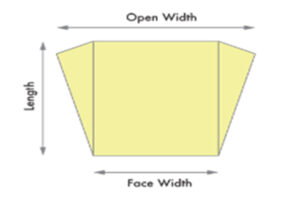
To find the correct size sack for your bins, it’s important that you understand the three measurements used to calculate the dimensions of a bin bag.
These three measurements are the face width, open width and length.
The face width is the sealed, closed width of the bottom of your bin bag. The open width is the maximum width of the bin bag when it is stretched from one side to the other. The length is simply the measurement from the top to the very bottom of the bin bag.
With these three measurements, you can work out what size bag you need for your bins.
What size bin bag for my round bins?
To find the correct size bin bag for your round bins, there are two simple steps you need to take.
1. Measure the circumference of your bin. The circumference is the length of the edge around a circle – in this case the length all the way around the rim.
2. Then divide the circumference by two. The resulting number is the open width dimension you need for your bin bag.
TIP: A simple way to calculate the circumference of your bin is to find the diameter (the width from one side to the other) and multiply this by 3.14 (pi).
3. Measure the height of your bin from top to bottom. Add approximately 20% onto the height to find the length of bin bag you need. This extra 20% allows for an overhang which stops the bag falling in the bin and gives you plenty of room for tying.
As an example, if your bin has a 50” circumference, you must divide this by two – giving you 25”. Therefore, the open width of your bin bag should be 25”. If your bin is 30” tall, you will need a sack with a 36” length.
What size bin bag for my square and rectangular bins?
To find the right bin bag for your square and rectangular bins you must add up each of its sides and divide by two.
1. Calculate the perimeter – the total measurements of all the sides of your bin.
2. Divide the perimeter of your bin by two. The resulting number is the open width you need for your bin bag.
3. Measure the height of your bin and add roughly 20% onto the total to allow for a good overhang and easy tying.
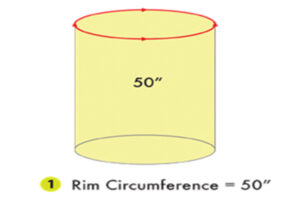
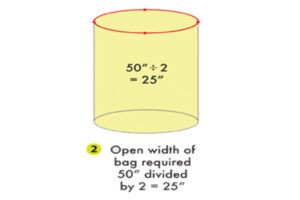
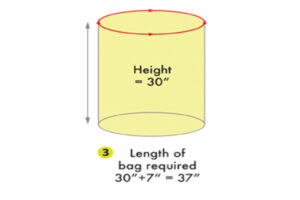
CHOOSE YOUR WEIGHT REQUIREMENTS
To avoid rips and tears when transporting waste around your venue, it’s essential you pick a bin bag that is strong enough to handle the weight of your rubbish.
All our black, clear and coloured bin bags work to the CHSA (Cleaning and Hygiene Suppliers Association) accredited weight capacity system. This accreditation ensures the bags can conform to a weight drop test and puncture, ripping and tearing measures.
TIP: Bin liners and compostable bin liners are not governed by the CHSA weight testing accreditation as they are not designed for heavy use.
CHSA ratings are basic requirements. We operate a higher specifications for our bags. These ratings are the maximum weight capacity each bag can hold in kilograms, and range from the light-duty 5kg bin bags to the extra heavy-duty 20kg sacks.
For most businesses, a 5kg or 10kg bag will be perfect for day-to-day use. However, if you are disposing of heavy waste, a 20kg sack may be better suited. Consider what kind of waste will go into your refuse sack and judge the weight that each bag will need to hold.
FREQUENTLY ASKED QUESTIONS
What is a bin bag gauge?
The gauge of a bin bag refers to how thick it is – the greater the gauge, the thicker the bag. Many people believe that the strength of a bin bag is determined by how great its gauge is.
This is a common mistake. Bag strength is dependent on the blend, the materials used and whether HDPE or LDPE.
Some manufacturers use chalk dust to bulk up the polythene when producing their bin bags. This makes the bag brittle and prone to ripping whilst giving the perception that the film is thick and strong.
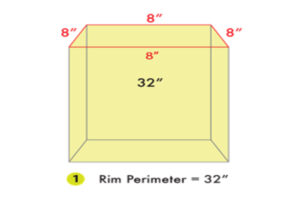
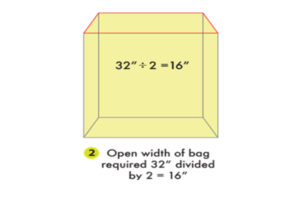
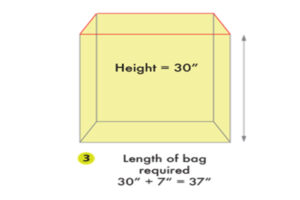
Literage Basic Rules:
A cubic metre holds 1000 litres of water / air
So say a bag is 18 x 29 x 39
Ignore the first measurement; the second is the rim of the bin.
So if the size is 29 inches it’s a rim of 58 inches.
The height it 100cm.
So the bag is basically a drum, using equation of:
circumference = pie x diameter = pie x 2 radius
so radius = circumference / 2 pie
so multiply 58 x 2.5 to give centimetres = 145
Radius = 145/2x 3.14=24cm
So volume is pie x radius x radius x height
So a 18 x 29 x 39 is 24 x 24 x 100 57600
Every litre is 1000 cubic cm 57.6
The best way to save money and use less bags is to use quality bags. You want the bags that do the job. All our bags are made from recycled material since 1979. We have served the UK education sector and many commercial businesses, hotels, race – courses, councils, prisons, hospitals, holiday clubs and golf clubs.
What is a bin liner ‘gauge’?
When we talk about the gauge, we simply mean the thickness of the bag. Typically, gauge is used to describe bags of a low density. We may also talk about microns in the same subject as 1 micron is equal to 4 gauges. Below, we have broken down the gauges and microns in different standards of bags:
· Light duty bin liner, (tends to me quite low in cost): 80 Gauge / 20 Microns
· Medium duty, standard bin liner: 100 Gauge / 25 Microns
· Medium duty, standard refuse sack (general purpose): 120 Gauge / 30 Microns
· Heavy duty (general use): 160 Gauge / 40 Microns
· Extra heavy duty bag (commercial waste): 180 Gauge / 45 Microns
· Extra heavy duty (gardening waste): 180 Gauge / 45 Microns
· Rubble sacks (building waste): 500 Gauge / 125 Microns
Certain bags tend to be more crinkly than others. This is caused by some bags being made from medium and high density polythene. Regardless of this, when there are sharp objects including metal and glass in the bag, this will tear most of them. Most thin bags cannot take weight and will tear straight away, yet the heavier duty sacks will not tear first without first being torn or punctures.
